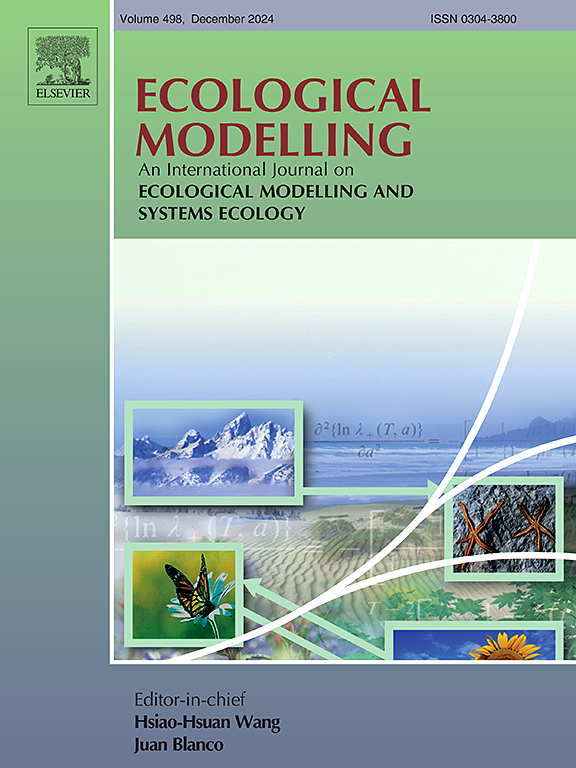Modeling water quality in a subalpine lake
IF 3.2
3区 环境科学与生态学
Q2 ECOLOGY
引用次数: 0
Abstract
Subalpine lakes are valuable resources that are at increasing environmental risk. Aquatic ecosystem models are useful tools for understanding dynamics of lakes, however, there are few examples of these models being applied to subalpine lakes, which may differ from temperate lakes in dimensions such as physical setting and ecology. Here we apply the aquatic ecosystem model AQUATOX to the Loch, a well-studied lake in Rocky Mountain National Park in Colorado, USA, to assess the applicability of this model to a subalpine lake setting, and to identify modeling gaps. We found that AQUATOX could represent phytoplankton dynamics during the ice-off period. Attempting to calibrate the model during the ice-on period using the same structure and parameters as the ice-off period underestimated winter chlorophyll a concentrations. Additionally, the model was used to simulate a nutrient bioassay experiment – nitrate was well simulated; P was overestimated but consistent with the observed pattern. These results support the use of current models for subalpine lakes when data are sufficient. Areas identified for future model development include better models for boundary conditions, improved light data, modeling of mixotrophy, and better representation of ice formation and under-ice stratification.
模拟亚高山湖泊的水质
亚高山湖泊是宝贵的资源,但面临的环境风险越来越大。水生生态系统模型是理解湖泊动态的有用工具,然而,这些模型应用于亚高山湖泊的例子很少,亚高山湖泊在物理环境和生态等方面可能与温带湖泊不同。本文将AQUATOX水生生态系统模型应用于美国科罗拉多州落基山国家公园的湖泊,以评估该模型在亚高山湖泊环境中的适用性,并确定模型的空白。我们发现AQUATOX可以代表冰期浮游植物的动态。试图在冰期使用与冰期相同的结构和参数校准模型低估了冬季叶绿素a浓度。此外,还利用该模型模拟了营养物生物测定试验——硝酸盐模拟效果良好;P值被高估,但与观察到的模式一致。这些结果支持在数据充足的情况下使用当前的亚高山湖泊模型。确定未来模型发展的领域包括更好的边界条件模型、改进的光数据、混合营养模型以及更好地表示冰的形成和冰下分层。
本文章由计算机程序翻译,如有差异,请以英文原文为准。
求助全文
约1分钟内获得全文
求助全文
来源期刊

Ecological Modelling
环境科学-生态学
CiteScore
5.60
自引率
6.50%
发文量
259
审稿时长
69 days
期刊介绍:
The journal is concerned with the use of mathematical models and systems analysis for the description of ecological processes and for the sustainable management of resources. Human activity and well-being are dependent on and integrated with the functioning of ecosystems and the services they provide. We aim to understand these basic ecosystem functions using mathematical and conceptual modelling, systems analysis, thermodynamics, computer simulations, and ecological theory. This leads to a preference for process-based models embedded in theory with explicit causative agents as opposed to strictly statistical or correlative descriptions. These modelling methods can be applied to a wide spectrum of issues ranging from basic ecology to human ecology to socio-ecological systems. The journal welcomes research articles, short communications, review articles, letters to the editor, book reviews, and other communications. The journal also supports the activities of the [International Society of Ecological Modelling (ISEM)](http://www.isemna.org/).
 求助内容:
求助内容: 应助结果提醒方式:
应助结果提醒方式:


